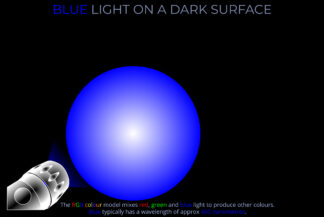Rainbows & the Polarization of Light
£0.00
This is one of a set of almost 40 diagrams exploring Rainbows.
Each diagram appears on a separate page and is supported by a full explanation.
- Follow the links embedded in the text for definitions of all the key terms.
- For quick reference don’t miss the summaries of key terms further down each page.
Description
RAINBOWS & THE POLARIZATION OF LIGHT
TRY SOME QUICK QUESTIONS AND ANSWERS TO GET STARTED
About the diagram
About rainbows and light
About raindrops and the polarization of light
Some key terms
Polarization of electromagnetic waves refers to the direction in which they oscillate, perpendicular to the direction of the wave’s propagation.
- Polarization can be induced in light waves by various means, such as reflection, refraction, and scattering.
- There are several types of polarization, including circular, elliptical and plane polarization.
- Circular polarization refers to waves that rotate in circles as they propagate, with the electric and magnetic fields perpendicular to each other.
- Elliptical polarization combines linear and circular polarization, in which the wave oscillates in an elliptical pattern.
- Plane polarization (sometimes called linear polarization) refers to waves that oscillate in a single plane, such as waves that are vertically or horizontally polarized.
The spectral colour model represents the range of pure colours that correspond to specific wavelengths of visible light. These colours are called spectral colours because they are not created by mixing other colours but are produced by a single wavelength of light. This model is important because it directly reflects how human vision perceives light that comes from natural sources, like sunlight, which contains a range of wavelengths.
- The spectral colour model is typically represented as a continuous strip, with red at one end (longest wavelength) and violet at the other (shortest wavelength).
- Wavelengths and Colour Perception: In the spectral colour model, each wavelength corresponds to a distinct colour, ranging from red (with the longest wavelength, around 700 nanometres) to violet (with the shortest wavelength, around 400 nanometres). The human eye perceives these colours as pure because they are not the result of mixing other wavelengths.
- Pure Colours: Spectral colours are considered “pure” because they are made up of only one wavelength. This is in contrast to colours produced by mixing light (like in the RGB colour model) or pigments (in the CMY model), where a combination of wavelengths leads to different colours.
- Applications: The spectral colour model is useful in understanding natural light phenomena like rainbows, where each visible colour represents a different part of the light spectrum. It is also applied in fields like optics to describe how the eye responds to light in a precise, measurable way.
An observer perceives bands of colour when visible light separates into its component wavelengths and the human eye distinguishes a series of distinct adjacent colours.
- The human eye and brain together translate light into colour.
- When rain disperses sunlight and forms a rainbow, an observer will typically distinguish red, orange, yellow, green, blue and violet bands of colour.
- Although a rainbow contains electromagnetic waves with all possible wavelengths between red and violet, some ranges of wavelengths appear more intense to a human observer than others.
Rainbow colours are the colours seen in rainbows and in other situations where visible light separates into its different wavelengths and the spectral colours corresponding with each wavelength become visible to the human eye.
- The rainbow colours (ROYGBV) in order of wavelength are red (longest wavelength), orange, yellow, green, blue and violet (shortest wavelength).
- It is the sensitivity of the human eye to this small part of the electromagnetic spectrum that results in our perception of colour.
- The names of rainbow colours are a matter more closely related to the relationship between perception and language than anything to do with physics or scientific accuracy. While the spectrum of light and the colours we see are both determined by wavelength, it’s our eyes and brains that turn these differences in light into the colours we experience.
- In the past, rainbows were sometimes portrayed as having seven colours: red, orange, yellow, green, blue, indigo and violet.
- Modern portrayals of rainbows reduce the number of colours to six spectral colours, ROYGBV.
- In reality, the colours of a rainbow form a continuous spectrum and there are no clear boundaries between one colour and the next.



